For small and medium-sized enterprises (SMEs), focusing on email security is essential to protect their information assets.
This article will comprehensively review the challenges and solutions related to email security faced by companies. In this context, "email security" refers to the technologies designed to protect information assets from threats arising from email use, as well as ensuring that email exchanges occur securely.
We will present the best approach until 2025, including the latest technologies needed in the Zero Trust Security era, real-world implementation case studies, and key points for successful implementation. If you are concerned about email security or are considering implementing measures, this article will be beneficial for you.
Why is Email Security So Important Today?
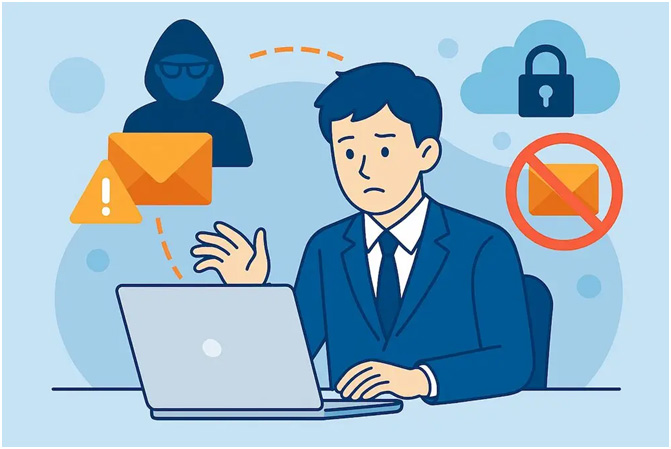
In recent years, "email security" has become an urgent management challenge for companies. The background to this phenomenon is a dramatic increase in phishing and
Business Email Compromise (BEC) scams, the emergence of new vulnerabilities due to changes in working practices, and tighter legal regulations. Additionally, the "PPAP" method (sending encrypted files via email, then sending the password separately), which various organizations have widely used, is now also indicated to pose risks of information leaks and malware infections.
Rapid Increase in Phishing Scams and Business Email Fraud
One of the most alarming cyber threats globally is phishing and Business Email Compromise (BEC). Recent data from the National Police Agency of Japan (2024) shows a significant increase in the number of incidents and losses resulting from these attacks. Phishing cases have increased by 1.5 times compared to the previous year, with financial losses also rising sharply.
Even more worrying, BEC attacks are now targeting companies by posing as business partners or company executives via fake emails. In some cases, a single BEC email can cause losses of tens of millions of yen due to undetected fake fund transfer instructions or invoice forgery.
A similar phenomenon has also occurred in Indonesia. Based on reports from various cybersecurity and national banking institutions, phishing and BEC attacks have become increasingly prevalent, especially since the rise in the use of email and digital transactions post- -pandemic. Several companies in Indonesia have even fallen victim, suffering losses of hundreds of millions to billions of rupiah due to fund transfers to the wrong accounts as a result of convincing fake emails.
Business Email Compromise cases in Indonesia often involve:
- Falsified invoices or financial documents from vendors/resellers.
- Emails claiming to be from the financial director or CEO, requesting payment transfers.
- Company email accounts are being hacked and used to deceive business partners.
Unfortunately, many companies in Indonesia still lack email protection and multi-layered authentication systems, let alone solutions such as
Disaster Recovery or
Backup Email, which can help recover important communication data after an attack.
Given this situation, it is clear that protection against phishing attacks and BEC must be a top priority for all businesses in Indonesia, not just large companies, but also SMEs and startups. Some steps that can be taken include.
- Implementation of Email Security Gateway or AI-based anti-phishing solutions.
- Internal employee training to recognize the characteristics of fake emails.
- Enabling multi-factor authentication (MFA) on all business email accounts.
- Use the following services: Backup Email & Disaster Recovery to ensure that communication is not lost and can be restored after an attack.
Increased Use of Cloud and WFH Reveals System Vulnerabilities
Additionally, the rapid adoption of remote work (WFH) and cloud services has heightened security concerns. In remote environments, perimeter-based security, such as that found in internal corporate networks, is no longer adequate. This situation increasingly relies on individual employees' devices and network settings. Furthermore, with the widespread use of cloud services, risks associated with access from personal devices (BYOD - Bring Your Device) have become more pronounced.
Surge in Targeted Cyber Attacks via Email
Targeted attacks originating from email continue unabated. In the report "Top 10 Information Security Threats 2024" released by the IPA (Information-technology Promotion Agency), "Theft of Confidential Information through Targeted Attacks" ranks fourth as a threat to organizations. Analysis shows that most of these attacks use email as the initial entry point. Tactics to trick users into clicking on attachments or links in business emails remain highly effective, and delays in taking preventive measures can have fatal consequences.
The Impact of Guidelines and Regulations (such as the Revision of the Personal Data Protection Act)
In addition, tighter regulations and legal guidelines are also urging companies to take immediate action. For example, the revision of the Personal Data Protection Act (PDP Act) in 2022 strengthens reporting obligations for handling high-risk information leaks. This requires rapid reporting and notification to the individuals concerned in the event of sure leaks. As a result, even a simple email misdelivery, if it contains personal data, is increasingly likely to result in legal liability.
In the JIS Q 15001 standard, which is the standard for the Privacy Mark system (a certification awarded to businesses in Japan that effectively manage and protect personal information), preventing misdelivery and implementing encryption are also highly recommended. The Privacy Mark system aims to ensure that companies have a robust framework in place to protect their customers' data, build trust, and comply with strict regulations. By adhering to these standards, companies not only avoid legal penalties but also strengthen their reputation and customer trust.
In response to this situation, many companies are shifting from conventional perimeter defense security models to Zero Trust security models and redesigning their email security. The attitude of no longer viewing email as just a regular work tool, but rather as the most dangerous "entry point" that must be strategically protected, will become increasingly important in the future.
Three Essential Elements of Email Security

Email security is an integral part of protecting a company's information assets. By focusing on the following three points, you can build a much stronger security posture.
Authentication and Verification of Sender Identity
To prevent identity spoofing (email spoofing), a system is needed that can verify the authenticity of the email sender.
- SPF (Sender Policy Framework) verifies whether the sender's IP address is valid.
- DKIM (DomainKeys Identified Mail) adds a digital signature to emails to prevent forgery or content alteration.
- DMARC (Domain-based Message Authentication, Reporting, and Conformance) allows recipients to determine email handling policies based on the results of SPF and DKIM verification.
Additionally, by implementing BIMI (Brand Indicators for Message Identification), a company's brand logo can be displayed on authenticated emails, allowing recipients to confirm the email's authenticity visually.
Ensuring Content Security
The email content itself also requires special attention. Phishing scams and malware attachments exploit recipients' negligence to steal information. It is essential to prevent these threats from the outset by utilizing antivirus and spam filtering functions.
Additionally, encrypting the content of emails and their attachments can reduce the risk of information leaks during communication. Furthermore, by implementing DLP (Data Loss Prevention) features, you can prevent the leakage of confidential information and contribute to regulatory compliance.
Preventing Delivery Errors, Identity Spoofing, and Internal Fraud
Human error and internal fraud are also significant factors contributing to information leaks. As a preventive measure against sending errors, features such as confirmation before sending and implementation of approval workflows from superiors are highly effective. Additionally, to prevent internal fraud, proper access rights management and log monitoring are crucial. By combining these measures, you can enhance the overall security of your organization.
By implementing comprehensive email security measures based on these points, companies can protect their information assets and achieve reliable communication.
Key Threats and Attack Patterns
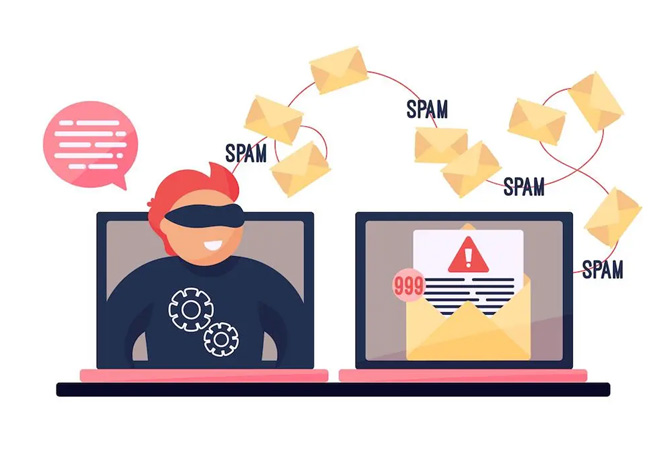
Email is indeed the primary communication tool in business, but it has also become the main gateway for cyberattacks. Below, we will discuss the main threats and attack patterns that occur via email.
One of the most shocking cases in the Indonesian business world was the BEC incident that hit a large distribution company in Jakarta in 2022. In this case, the email account of one of the finance staff was hacked by cybercriminals. The hackers then sent emails to the management team, posing as an official vendor, attaching fake invoices and instructions to transfer funds to an account that belonged to the attackers.
Since the email looked legitimate and came from the company's internal domain, no one suspected anything. As a result, the company transferred more than Rp2.3 billion to the scammers' account. Unfortunately, the funds were immediately withdrawn and moved overseas in a short period of time, making the investigation and recovery process very difficult.
Types of Cyber Threats via Email
1. Business Email Compromise (BEC)
Attackers impersonate company executives, vendors, or trusted business partners, then send emails containing instructions to transfer funds or request sensitive information. The emails are typically persuasive, using domains that are similar to or have been hijacked from internal email accounts.
2. Phishing and Spear Phishing
Emails containing malicious links or attachments that, when clicked, can steal account credentials, credit card information, or spread malware. Spear phishing is more dangerous because it is specifically targeted at particular individuals within a company.
3. Malware & Ransomware
Through emails containing attachments (Excel files, PDFs, ZIPs, etc.), attackers spread malware that can lock systems (ransomware) or steal company data without being detected.
Why Are Companies Vulnerable?
- Lack of cybersecurity training for employees.
- No email protection systems such as SPF, DKIM, and DMARC.
- Not using two-factor authentication (2FA/MFA) for essential emails.
- Limited monitoring of suspicious activities within the email system.
Solutions to Protect Your Business from Email Attacks
1. Use Email Security Gateway
This solution is capable of filtering incoming emails, detecting fake domains, malware, and even executive impersonation attempts.
2. Enable Multi-Factor Authentication (MFA)
Don't rely solely on passwords. MFA adds an extra layer of security to prevent email account hijacking.
3. Implement Email Backup and Disaster Recovery
With Email Backup and Disaster Recovery solutions, all crucial conversations and documents remain securely stored even in the event of an attack or loss of access.
4. Cybersecurity Awareness Training for Employees
Regular education on types of phishing, how to recognize fake emails, and internal verification procedures can prevent major incidents.
Errors in Delivery and Misrepresentation of Identity within the Company
Email delivery errors due to human error and identity spoofing by internal parties are also significant factors causing information leaks. For example, there have been cases where emails containing confidential information were sent accidentally or internal employees impersonated others to issue false instructions.
To address this threat, it is not enough to simply implement technical security measures. Increasing employee security awareness and establishing appropriate operational rules are also very important. By strengthening email security, companies can protect their information assets and achieve reliable business communication.
Essential Security Solutions for Companies
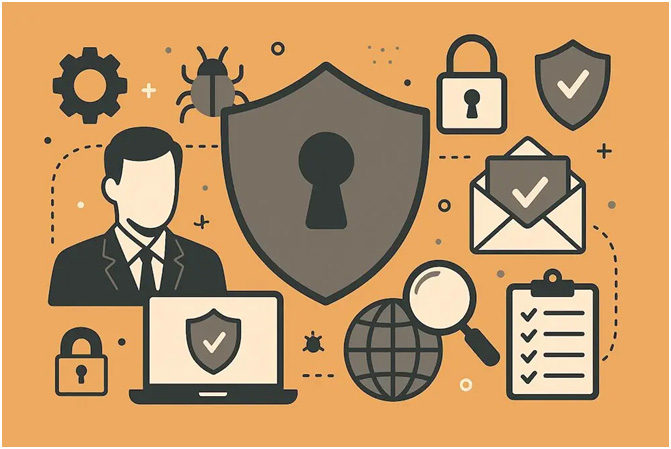
As the primary battlefield for cyber attacks shifts to email, a single type of defense is not enough to protect corporate information assets. Against increasingly sophisticated tactics such as targeted attacks and Business Email Compromise (BEC) scams, a multi-layered defense that combines multiple layers of protection is essential.
Here, we will provide an overview of standard email security technologies and steps, as well as explain the benefits of cloud-based solutions.
Sandboxing, EDR/XDR, SIEM, and SOC
Sandboxing is a technology that runs suspicious attachments or links in an isolated environment to verify their safety. It is effective against unknown malware. By integrating with EDR (Endpoint Detection and Response) or XDR (Extended Detection Response), sandboxing can accelerate monitoring of device and network behavior, as well as incident response.
Furthermore, SIEM (Security Information and Event Management) collects and analyzes log data to help detect threats earlier. In addition, by establishing a SOC (Security Operation Center)—a specialized organization tasked with detecting, analyzing, and responding to cyber attacks—both inside and outside the company, real-time monitoring systems can be implemented, enabling damage to be minimized.
Email Gateway, Spam Filter, and DLP
On the other hand, for defense at the email gateway, email gateways and spam filters are very effective. These tools automatically block known spam emails or emails from malicious senders.
In addition, DLP (Data Loss Prevention) is a technology to prevent confidential information from being leaked outside the company. This technology also includes functions to check the contents of file attachments and block inappropriate transmissions.
Multi-Factor Authentication, Digital Signatures, and TLS/SSL Encryption
User authentication and communication security are also critical. By implementing Multi-Factor Authentication (MFA), the risk of unauthorized login due to stolen IDs and passwords can be significantly reduced. Additionally, digital signatures verify the sender's authenticity and ensure that emails have not been altered. Meanwhile, TLS (Transport Layer Security) or SSL (Secure Sockets Layer) encryption prevents email content from being intercepted or modified during transmission.
Benefits of Implementing Cloud-Based Email Security
As a means to achieve the layered defense mentioned earlier, implementing cloud-based email security services has proven highly effective. For example, "Cloudmatika can reduce implementation and operational costs while consistently applying security measures based on the latest threat intelligence, thereby reducing the burden on internal IT departments.
Additionally, "Cloudmatika is equipped with AI-based technology called 'Active Protection ,' which can prevent malware risks such as ransomware and viruses, thereby securing your data before incidents occur."
The key to email security is "combining various technologies" and "continuous management." Building an adaptive security posture by combining a variety of methods in line with the latest developments will serve as a foundation that supports continuous trust and business continuity.
Procedures and Methods for Selecting Email Security Implementations
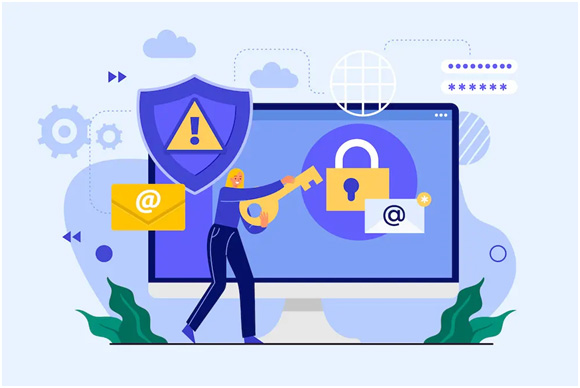
To address the threats outlined above, such as phishing, malware, and unauthorized access, implementing appropriate email security measures is crucial. Here, we will summarize specific implementation steps, key considerations when selecting services, and optimal approaches for small and medium-sized enterprises (SMEs).
Implementation Procedures: From Registration to Configuration
Implement email security services in general through the following steps:
1. Service Registration.
When signing the contract, it is essential to ensure compatibility with your company's email environment (e.g., Microsoft 365, Google Workspace, or your own SMTP server).
2. Initial Setup.
You will log in to the administration panel to configure email reception and delivery rules, as well as register administrator accounts. Many cloud-based services provide step-by-step guides, making the initial implementation process relatively straightforward.
3. DNS Settings Changes.
To enable spam filters and anti-spoofing features, you need to configure DNS records such as SPF/DKIM/DMARC. This will allow blocking of spoofed emails and authenticate the sender's domain.
4. Testing and Start of Operations.
After implementation, send and receive test emails to check the accuracy of the filter and the presence of false positives (incorrect detections). During the operational phase, daily log checks and periodic reviews of settings are required.
Whitelist and Blacklist Management
One crucial operational element after implementation is the management of whitelists (trusted senders) and blacklists (blocked senders). This allows you to flexibly restore incorrectly blocked business emails or block emails from malicious senders. If you choose a service equipped with automatic learning functions, you can achieve accurate spam filtering while reducing the management workload.
Utilization of Email Archiving, Quarantine, and Audit Logs
Many email security products include features such as email archiving (long-term email storage), quarantine (temporary isolation of suspicious emails), and audit logs (recording of operation and communication history). These features are effective for preventing information leaks, internal control, and regulatory compliance.
For example, in the event of an incident, you can check the contents of quarantined emails or track the delivery path using logs, which will lead to rapid identification of the cause and response. In addition, the archiving function is also helpful for storing the email content of employees who have resigned or for internal company investigations.
Comparison Points in Selecting a Service
When selecting the most suitable email security product from the many options available, it is essential to compare them based on the following criteria:

Optimal Solution for Small and Medium-sized Enterprises (SMEs)?
For Small and Medium-sized Enterprises (SMEs), it is not uncommon for them to lack a large IT department or dedicated security staff. Therefore, cloud-based services with simple setup and automatic security features are a realistic and efficient choice.
Services such as "Cloudmatika Mail Buster" offer a complete solution in one package, including spam and virus protection, phishing protection, email spoofing protection, attachment assessment, file protection, and protection against email identity spoofing. This solution significantly reduces the complexity of implementation and management overhead. Since it is cloud-based, there is no burden on your email server, and implementation can be done simply by changing the MX record.
Email Security Implementation Case Study: An Electronic Distribution Company in Surabaya
One of the leading electronic distribution companies in Surabaya experienced a surge in spam and phishing emails that disrupted internal communication and communication with business partners. The daily volume of irrelevant emails overwhelmed staff, increasing the risk of click errors and potential data breaches.
To address these challenges, the company tried a cloud-based email security service such as "Cloudmatika Mail Buster" on a trial basis. The results were immediate: a drastic reduction in incoming spam, more accurate phishing email detection, and increased team efficiency. Because the setup was simple and did not interfere with the existing email system, the service was then fully implemented across all divisions.
After implementation, the intuitive management interface and automatic learning features help them easily handle potential false positives . No advanced technical skills are required, so even non-IT staff can manage the system smoothly. Going forward, companies can plan to review their entire communication system and enhance other layers of digital security.
Since it can be integrated without replacing existing email systems, Cloudmatika Mail Buster is a practical and wise choice for building defenses against cyber threats—including phishing attacks and Business Email Compromise (BEC)—for mid-sized companies.
Security Education and Operational Policy Overhaul
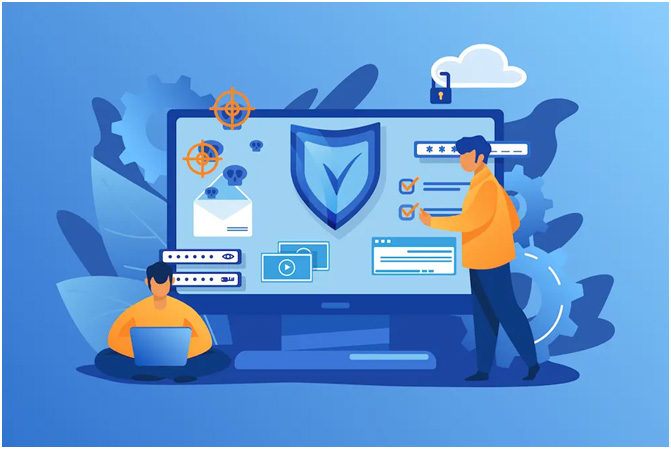
Many cyber attacks occur due to human error. In particular, if phishing emails or attachments containing malware are opened, this can lead to severe losses such as personal information leaks or ransomware infections. Therefore, in addition to technical measures, improving the security awareness of every employee is essential. Here, we will explain specific methods for security education and operational rule improvements.
The Importance of Security Education / User Education for Employees
The first important thing is to implement security education for employees. Even though high-performance security products have been implemented, the final decision still lies in the hands of humans. Actions such as using the same password repeatedly, opening suspicious emails, or clicking on unknown links can pose a risk to the entire company. Initial training for new employees is very important, and periodic refresher training for all employees is also highly recommended. Additionally, education based on concrete case studies, such as how to identify phishing emails or the differences between using work accounts and personal accounts, will be more effective.
Developing Email Rules and Operational Policies
Next, it is necessary to develop clear and well-documented operational email rules and security policies. Examples include rules such as always using the designated company email address for business communication, setting passwords for file attachments, or not including business partner information or confidential documents directly in the email content. Additionally, by establishing procedures for handling email delivery errors or suspected phishing attempts, the spread of damage can be prevented.
Strategies for Increasing Security Awareness
Furthermore, ongoing efforts to instill security awareness are also important. As practical training, more and more companies are regularly conducting "mock attacks" that mimic phishing emails. Through this, employees can reflect on their own actions and learn firsthand what types of emails are dangerous. In addition, by disseminating the latest security news and alerts via internal newsletters or emails, awareness can be continuously raised.
Security consists of two pillars: "systems" and "people." Not neglecting education and rule enforcement, as well as sharing the understanding that every employee is responsible for security, will be the foundation that supports a safe working environment.
Email Security Is a Must, Cloud Is the Optimal Solution
Given the importance of email authentication as the first line of defense against email spoofing and potential reputational damage, it is clear that implementing SPF, DKIM, and DMARC is no longer an option but an absolute necessity. Without these basic settings, your company is vulnerable to phishing attacks that can harm not only your business but also your partners.
Furthermore, when choosing an email security model, the trends and advantages offered by cloud-based services make them a better and more practical choice for most companies today. The flexibility, automatic updates, cost efficiency, and ease of scalability offered by cloud models are well-suited to the ever-evolving nature of cyber threats, as well as the resource constraints that companies may have.
Don't let your email security be a weak point! Take proactive steps now. Consult with our email security experts to find the best solution tailored to your company's risk profile and budget.






